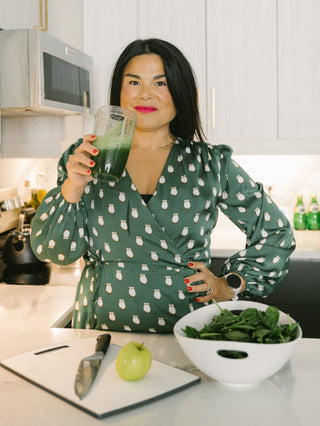Why Apps Like Yuka, EWG, and Think Dirty Often Fail Us in Beauty
By Jenn Harper
Founder & CEO, Cheekbone Beauty
In today’s world, where consumers want to make better, healthier choices whether in their food or their cosmetics apps like Yuka, EWG Skin Deep, and Think Dirty have exploded in popularity. They promise quick, easy answers: scan a barcode and instantly know if a product is "safe" or "toxic."
I absolutely support the growing desire for ingredient transparency. As a founder who's deeply involved in formulation and raw material sourcing, I know how overwhelming ingredient lists can be for people who aren't trained in cosmetic chemistry, toxicology, or supply chain management. It’s human nature we want black and white answers. We want to believe that something is either “safe” or “dangerous.” Unfortunately, it’s not that simple especially in beauty.
The Problem with One-Size-Fits-All Scoring
The biggest issue with these apps is that they assign ratings without knowing the full story of how a product is made. Ingredients are not simply good or bad based on their INCI (International Nomenclature of Cosmetic Ingredients) name. Where and how they are sourced matters — a lot.
For example:
Mica.
This ingredient can come from dozens of different suppliers across the world. Some mica is ethically sourced; some is not. Without knowing our supply chain — who we work with, what ethical sourcing audits are done, and how we verify human rights standards — these apps simply lump all mica together. The result? The consumer gets an incomplete and often misleading picture.
Pigments are another great example. Certain pigments used in cosmetics may have both synthetic and natural versions. Many natural pigments can actually contain higher levels of naturally occurring heavy metals (yes, nature can sometimes be more contaminated than the lab). We work with highly reputable suppliers (like Sensient Technologies) who purify and test these pigments to extremely strict standards, far beyond what most consumers realize. But again, these apps don’t know our process they simply read the ingredient name and make assumptions.
Ingredients Are Not Equal; But Apps Can't See That
When you scan a barcode, the app doesn’t have access to:
- The supplier’s identity
- Purity certifications
- Third-party testing results
- Sustainability and ethical sourcing practices
- Batch-level quality control data
At Cheekbone Beauty, we spend months sometimes years sourcing raw materials. We work directly with vendors who align with our values around sustainability, Indigenous stewardship, and transparency. But no app will ever capture that level of nuance. They simply can't.
Science Isn't Always Social Media Friendly
Toxicology is complex. Dosage, exposure, molecular weight, bioavailability these are concepts most people aren’t trained to evaluate. Instead, the apps simplify the science into emotional headlines:
“Endocrine disruptor!”
“Cancer risk!”
“Potential allergen!”
Without full context, these labels often do more to scare than to educate.
The Bottom Line: Ask Better Questions
I'm not saying consumers should stop caring, quite the opposite. My hope is that people do ask questions, but go deeper than an app can.
Ask brands:
- Where do you source your ingredients?
- What testing protocols do you follow?
- How transparent are your supply chains?
At Cheekbone Beauty, we welcome those conversations. We believe transparency isn’t a marketing buzzword it’s a responsibility.
So yes, these apps can start the conversation but they shouldn't end it.
Jenn Harper is the founder of Cheekbone Beauty, an Indigenous-owned, sustainable beauty brand based in Canada. Cheekbone Beauty formulates high-performance, low-environmental-impact cosmetics rooted in transparency and Indigenous values.


